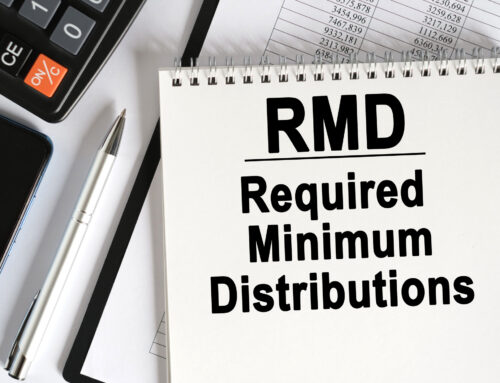
During bear markets, we must ask different questions about our money and our assets. It is no longer about which stocks will double over the next twelve months. Instead, it will likely be about how to preserve your portfolio value by investing in stable equities with a consistent yield or profitability to mitigate the risk of steep declines. Regardless, market downturns happen, and if you have an IRA, you might expect to rely on its distributions for income. However, taking distributions means you could risk cutting the lifespan of your portfolio if you withdraw during a market pullback. This is called the sequence of returns risk.
How Does Sequence of Returns Risk Affect You?
The sequence of returns risk is the concept that when you withdraw from your portfolio during declining periods, you’re withdrawing greater portions of your portfolio, leaving less left to benefit from a recovery, and thus diminishing the lifespan of your savings you may be relying on to last you through retirement.
If you use a Traditional IRA, for example, you may also face required minimum distributions (RMDs) which force you to liquidate your IRA incrementally by the time you reach a certain age. If you didn’t plan for a market downturn in retirement and didn’t factor in RMDs, you could be forced to lock in your losses by withdrawing.
What Can I Do to Mitigate Sequence of Returns Risk?
Many retirees take advantage of Roth IRAs for their tax benefits. But during recessions, Roth IRAs can play a key role in preserving your retirement assets because they don’t have RMDs. If you’ve been contributing to and growing a Roth IRA, you’ll have greater choice over when you can take distributions, and you will have greater flexibility to benefit from a market rebound. If you have other income sources, such as Social Security or annuity payments, forgoing withdrawals from your market-exposed accounts can help you benefit from a market recovery and preserve the lifespan of your savings.
However, it’s also important to know what’s in your IRA before and during recessions. The financial and economic landscape is changing more than it has in recent years, so it’s important to make sure you reconsider your portfolio holdings and adjust for a new future.
Taking stock of your retirement holdings is easier said than done. Talking to a financial advisor is the best first step to weathering what could be rocky waters ahead in financial markets. But that’s no reason to panic. To navigate markets like these, your portfolio may need professional attention, and that’s what we’re here for. At Epstein & White, we can help you create a long-term, plan that works with your overall retirement goals. Click here to sign up for a time to speak to us.
Please Note: Epstein & White is a tradename. All services provided by Epstein & White investment professionals are provided in their individual capacities as investment adviser representatives of Mercer Global Advisors Inc. (“Mercer Advisors”), an SEC registered investment adviser principally located in Denver, Colorado, with various branch offices throughout the United States doing business under different tradenames, including Epstein & White. Information contained herein is for informational and illustrative purposes only and general in nature. It should not be considered investment advice or a recommendation to buy or sell any type of securities or insurance products and no investment decision should be made based solely on any information provided herein. We provide this information with the understanding that we are not engaged in rendering legal, accounting, or tax services. We recommend that all investors seek out the services of competent professionals in any of the aforementioned areas.
Investment in securities carries a risk of loss, including loss of principal amount invested. Different types of investments involve varying degrees of risk. It should not be assumed that diversification or asset allocation protects a portfolio from loss or that such will produce profitable results. An annuity’s guarantee is subject to the claims-paying ability of the issuing insurance company.




